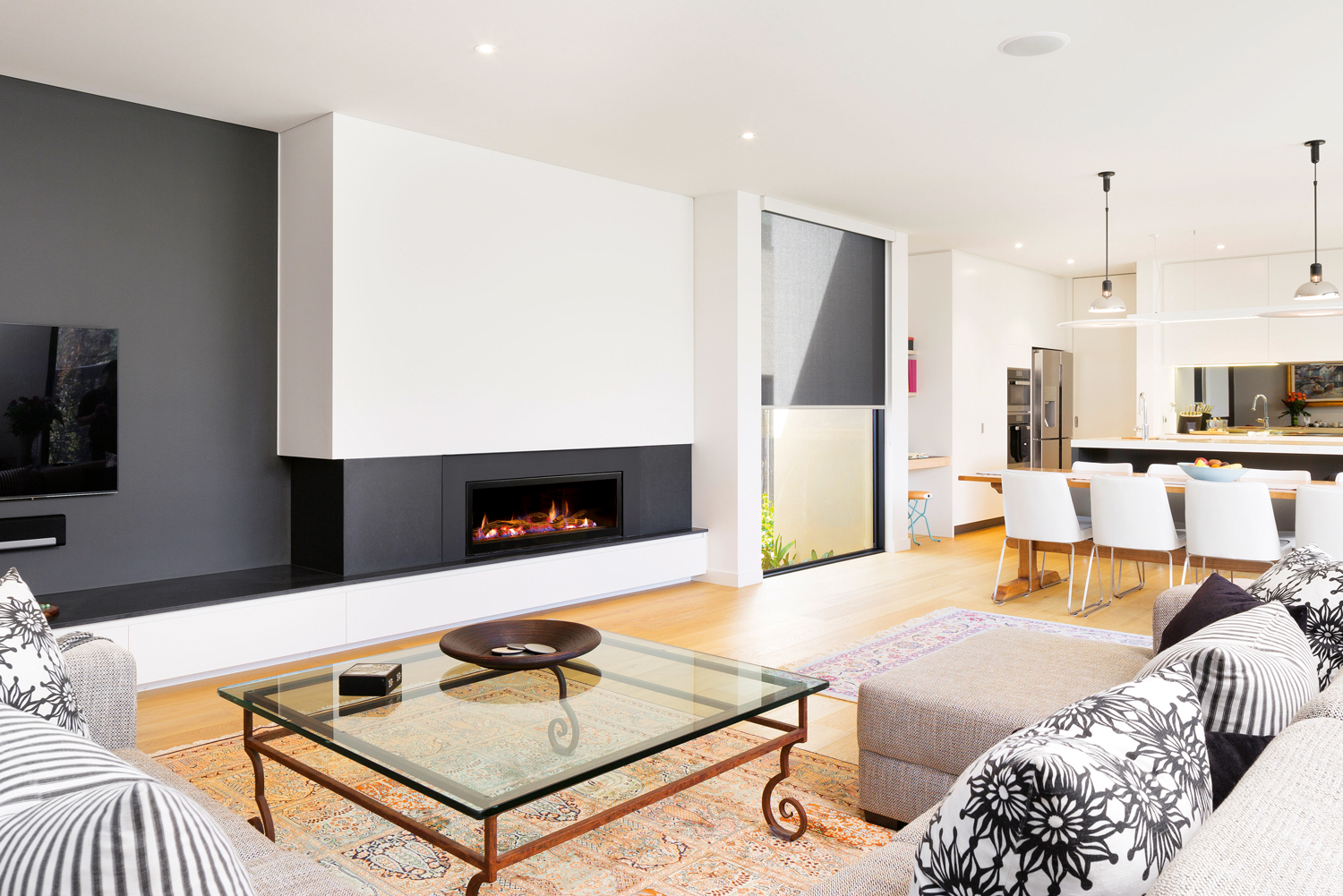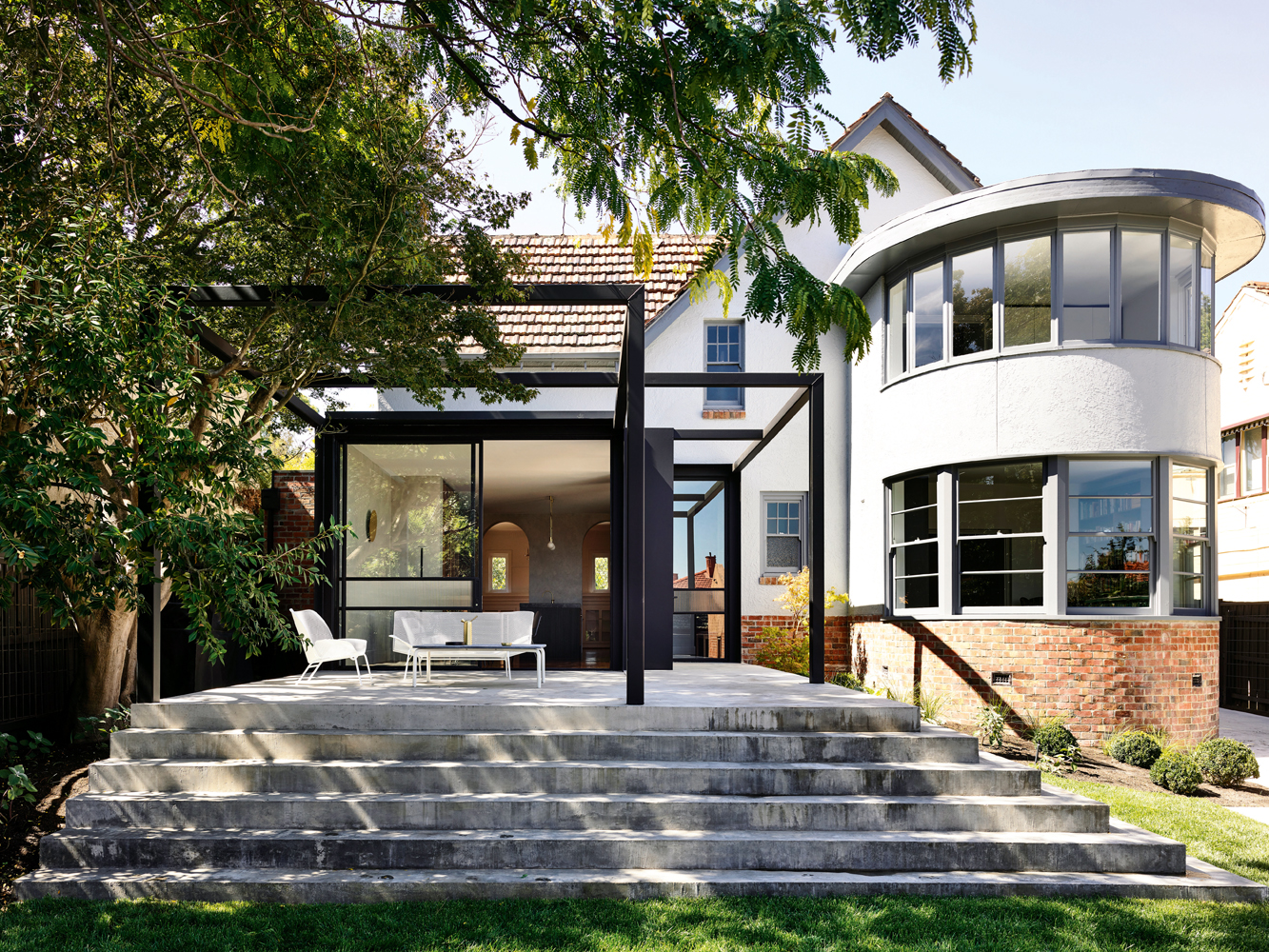
Story: Graham Jones
Photography: Chris Groenhout
As a designer who specialises in creating new residential projects, the notion of being involved with extending or renovating an existing residence almost brings on a panic attack. It’s not from a design perspective mind you, but where does one even begin to contemplate setting a budget that might bear some resemblance to the overall costs of the completed project? And from where does the courage come to turn your life upside down while strangers rummage through your beloved home, seemingly discovering the secrets of your private existence? It’s not my view of utopia, that’s for sure, however when you love where you live, it does make sense to consider upgrading your existing conditions rather than moving further into the ‘burbs’ and risk losing that sense of belonging in your well-worn surroundings.
When pressed to take on the odd renovation project, and then having consulted my family physician for sedation, I do actually enjoy the challenge, especially if the project requires expertise in contemporary design, my chosen path in life. However, I have found that each and every project has its own set of circumstances and each and every client has their own specific agenda. I personally like to spend quality time in the home to be renovated, getting to feel its soul, before ripping it apart and manipulating its character, breathing new life into a tired body which just doesn’t function anymore. And isn’t this why we choose to renovate? We’ve outlived our former requirements, circumstances change, families grow and in years gone by, young adults used to fly the coop!
I take the view that, like gentle persuasion of a loved one, gentle manipulation of the beloved home can often be all that is required to achieve the desired result. It is sometimes just so easy to attack the home like a ‘bull at a gate’, swing the steel ball then re-build the good bits, however with some concentrated thought and a good appreciation of the design brief, a simpler solution could just be at hand. The Mornington Peninsula home is a perfect example.
A driveway meanders through an established and much-loved formal garden, towards a tired, 1980s single-level pavilion atop the highest point of the site. Over our shoulder are the glistening waters of Port Philip Bay, with Sorrento and Portsea beckoning our attention far away in the distance. The low-slung hipped roof is barely visible as we rise up the site to the home and the carport, a latter addition; it’s squeezy to say the least and carries an unfortunate sloping roof, which is out of character with the remainder of the home. A cypress hedge segregates the swimming pool from the front patio leading to the principal yet informal entry. Although the extent of glazing is limited, the front rooms of the home are directed towards the pool and bay views beyond, but appear disconnected as the external entertaining area is high above the pool and unable to be seen beyond the hedge.
The home is quite large, but existing space planning for the new owners is cumbersome and misplaced for their needs, while utility rooms are outmoded and require urgent attention. A contemporary face-lift of the façade is also high on the agenda and those magnificent sea views need to be maximised.
A second-storey extension was proposed by the owners, however during meaningful discussions it was decided that as the home was already large, and beautiful views were to be enjoyed from the current home, a successful outcome could be achieved without the enormous additional expense. By adding a 1.5-metre strip along part of the rear of the building, increasing the size of the carport and filling in its walls and then merely pushing out under the eaves to increase two of the bedrooms, no further extensions to the home would be necessary.
Internal walls and spaces were manipulated to create improved spatial relations between rooms, while the kitchen, always the primary focus of this home, was slightly re-located to maximise its functionality, especially to the dining and living spaces. Its design would be imperative due to its central location in the open plan, as it is completely visible and open to the front entry. The island bench has been partially raised to lessen this impact. The rear extension would provide additional cupboard space and the opportunity to locate a large picture window to the established garden beyond. A new ‘butler’s-style’ walk-in pantry houses all the appliances and with an added sink, would become a secondary preparation area. To delineate the kitchen space in this large room, a perimeter plaster bulkhead was added. Large glazing to the rear extension has brought the charming garden into the dining room, which also looks westerly towards Portsea and Bass Strait beyond.
The front entry was always going to be a challenge as it faced the view. Al fresco entertaining and the swimming pool were all located here and these needed to be accessed to reach the entry. All principal rooms of the home would look beyond the entry to Port Philip Bay and therefore a formal entry as such would just not be appropriate. But there had to be an external focal point to draw visitors to the entry. This was achieved by expressing the façade with galvanized RHS columns and anodized aluminium louvre blades with a cantilevered roof protruding from the extended canopy, running the length of the home. Polycarbonate roofing allows filtered light through the louvres and minimises the visual impact of a heavier roof structure.
The simple detailing to solve the entry issue also established the contemporary façade to the building as a whole. With extensive glazing and anodised aluminium window systems, the façade is rectilinear and clean. The original hipped roof on the home is barely visible with the formation of the front canopy, and the odd-shaped roof to the carport has been concealed by a large rendered parapet butting against a boxed-in column finished in compressed FC sheet with expressed joins of U-channel aluminium. The removal of the front hedge and replacement with a 1.2-metre-high frameless glass balustrade not only enhances the clean lines of the home, but allows the pool now to become as one with the al fresco patio above.
Refurbishment of bathrooms and general joinery items are all pared-back and minimal, yet sophisticated in their content. Interior designer Bianca Jones worked closely with the owners in finessing the final fitout to ensure their personal tastes were catered for, yet appropriate to the life breathed into what has now become a fabulous new home.
Renovating and extending is all about the end result. Perhaps one doesn’t mind putting up with the pain and trauma involved in reaching that ultimate goal as long as the designer and builder have been able to achieve at the highest level. The owners of this Mornington Peninsula home are elated with the result and although the existing home had to be stripped bare, they are amazed that with a little pushing and prodding and re-shaping of the existing building, they now have a most functional, practical and modern home with an ambience and style of its own, to carry them and their young family well into the future.




